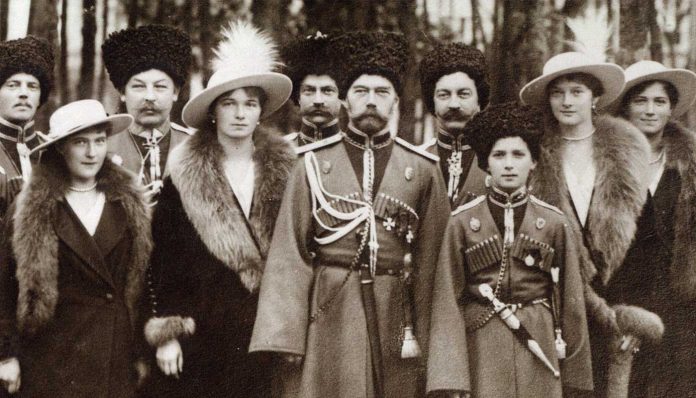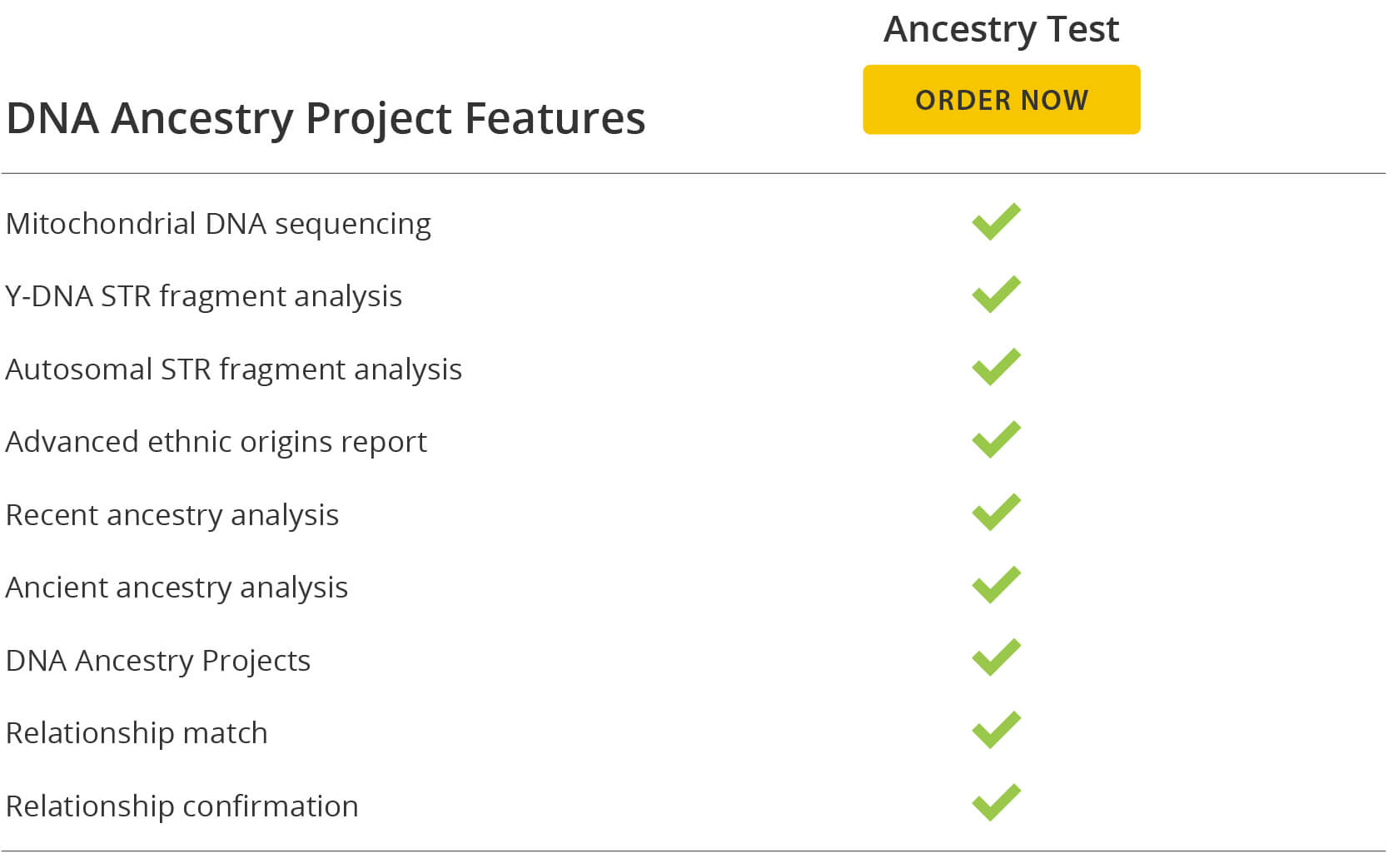The Romanov family was the last imperial family of Russia. Tsar Nicholas II was the eldest son of Emperor Alexander III and Maria Feodorovna of Denmark. He married Princess Alix of Hess and by Rhine, who was received into the Russian Orthodox Church upon her marriage to the Tsar and was given the name Tsarina Alexandra Feodorovna. The couple had four daughters (Olga, Tatiana, Maria and Anastasia) and one son (Alexei) who suffered from Hemophilia B. Hemophilia B was known as the ‘royal disease’ as the genetic mutation had been passed down through two of Queen Victoria’s daughters to various royal families across Europe.
The execution of the Romanov family
At the end of the February Revolution of 1917, Tsar Nicholas II was forced to abdicate. In March 2017, the Romanovs were put under house arrest, before they were evacuated to Tobolsk. Later that year, the Bolsheviks came to power and the Romanovs imprisonment conditions grew stricter. By May 1918, the Romanov family, along with three servants and the family doctor had been moved to Ipatiev House at Ekaterinburg (a.k.a Yekaterinburg) in the Urals of Central Russia in 1918.
In July 1918, the Bolsheviks feared that the encroaching White Army would take over Ekaterinburg and rescue the Romanovs, so on the night of July 16th/17th the entire family was executed. The Romanovs were woken during the night and left their rooms believing that they were being moved to a safer location. Instead, an execution squad of secret police (led by Yakov Yurovsky) was brought to the house and the Romanovs and their attendants were killed in the cellar. The bodies were stripped of clothing and jewels and thrown into an old mineshaft. The following day, the executioners returned to the mineshaft, as it was deemed too shallow. The bodies were removed and loaded into a truck in order to move them to deeper copper mines, but the truck got stuck on the way. Yurovsky made the quick decision to bury them right there underneath the road. According to legend, two bodies were burnt and buried elsewhere in an attempt to confuse anyone who discovered the mass grave.
Discovery of the remains in 1991
The case remained a mystery until July 1991, when nine human skeletons were discovered in a shallow pit around 20 miles from Ekaterinburg, Russia. Historians speculated that the remains belonged to the Romanov family. DNA testing was performed in an attempt to identify the remains.
Romanov DNA – Identifying the remains of the Romanov family using DNA
Three types of DNA tests were performed to confirm the identity of the Ekaterinburg remains:
1. Gender determination: To identify the gender of each of the nine skeletal remains.
A region of the amelogenin gene was amplified to determine the gender of each skeleton. This is a robust technique for gender analysis of ancient and degraded material. The amplified region from amelogenin on the X chromosome is 106 base pairs in length, while the region is 112 base pairs from the Y-chromosome. Therefore females will only show a product of 106 base pairs (as have two X-chromosomes), while males will show products at both 106 and 112 base pairs (as have one X and one Y-chromosome).
2. Relationship testing: To determine whether the nine skeletons are immediate family members.
The analysis of STR markers (short tandem repeats) is a useful technique for ancient and degraded DNA samples as only a small region needs to be amplified and analyzed. Autosomal STR analysis is used for relationship testing of both males and females, both for recent samples (e.g. paternity testing) and during the identification of old skeletons. We inherit one autosomal chromosome from each parent and we may inherit two of the same autosomal STR markers or two different autosomal STR markers. A child will have one autosomal STR marker that matches one marker from one parent and another autosomal STR marker that will match one marker from the other parent. Multiple markers are analyzed to reach a higher degree of accuracy.
3. Mitochondrial DNA test: To examine whether the skeletal remains are members of the Romanov family, by comparing the mtDNA profile of the remains to the mtDNA profile of Prince Philip.
Mitochondrial DNA (mtDNA) is circular DNA found in the mitochondria of human cells. Both males and females inherit mtDNA from their mother, (so both males and females can take the mtDNA test), but only females will pass the mtDNA down to the next generation, providing a way of tracing maternal ancestry.
Tsarina Alexandra was the maternal granddaughter of Queen Victoria, hence she had the same mtDNA profile as Queen Victoria. Prince Philip is a great-great-grandchild (maternal side) of Queen Victoria, so he also carries the same mtDNA as Queen Victoria and Tsarina Alexandra. The analysis of Prince Philip’s mtDNA enabled scientists to obtain the expected profile of Tsarina Alexandra and compare the expected profile to that obtained from bone fragments of the skeletons assumed to be Tsarina Alexandra and her children.
The analysis of the mtDNA of the skeletal remains of the Tsar’s brother, Georgij Romanov, and from two living maternal relatives was used to obtain the expected mtDNA profile for the Tsar.
Results of the DNA analysis
1. Gender determination: The gender analysis identified five of the skeletons as female and four as male.
2. Relationship testing: The autosomal STR testing identified five skeletons that belong to the same family and are likely to be a family unit, consisting of two parents (skeletons 4 (male) and 7 (female)) and three female children (skeletons 3, 5, 6). The remaining four skeletons (1, 2, 8, 9) are not related to this family. From this data, it was assumed that skeleton 4 was Tsar Nicholas II, skeleton 7 was Tsarina Alexandra and skeletons 3, 5 and 6 were three of the couple’s children.
3. Mitochondrial DNA analysis: The mtDNA analysis from skeletons 7 (putative Tsarina Alexandra) and 3, 5, 6 (putative Romanov children) showed that they all had an identical mtDNA profile, confirming a mother and children relationship. This mtDNA profile also matched that obtained from Prince Philip, confirming that these remains belonged to individuals with the same maternal ancestor – Queen Victoria. This mitochondrial sequence has been designated as “Queen Victoria” type and is very rare.
The mtDNA profile of skeleton 4 (putative Tsar Nicholas II) did not match the profile of Prince Philip, which was expected, as he is not a direct descendant of Queen Victoria. However, the mtDNA profile of skeleton 4 did match that obtained from the remains of his brother, Georgij Romanov, and from two living maternal relatives, except at position 16169. Tsar Nicholas II and Georgij Romanov carry a rare mutation at position 16169 of the HVR1 region of the mtDNA called a “heteroplasmy”. The maternal descendant from one sister is homopasmic 16169C, while the maternal descendant from the other sister is homopasmic 16169T, providing further evidence that the heteroplasmic mutation (16169C/T) observed in the Tsar is indeed a heteroplasmy, rather than contamination. The mitochondrial sequence has been designated as “Dagmar” type.
Conclusions of this DNA analysis
The DNA studies confirm that five out of the nine skeletons discovered truly belong to the Romanov family, namely Tsar Nicholas II, Tsarina Alexandra, and three of their four daughters. These skeletons were reburied with honors in the imperial-era capital of St. Peterburg. However, the skeletons of one of their daughters and their only son, Alexei, were not discovered in this grave. Historical evidence supports the scenario that two bodies were burnt and disposed of elsewhere.
Additional findings from the summer of 2007
In the summer of 2007, using metal detectors and metal rods as probes, two burned partial skeletons were discovered at a bonfire site, close to the mass burial site of the other Romanov family members. Fifteen intact bone fragments and more than forty pieces of charred bone were discovered. The site appeared to match the site described in the memoirs of Yurovsky (the Bolshevik officer in charge of the Romanovs’ captivity). According to his memoirs, the bodies of nine victims were doused with sulfuric acid and buried along a road and Alexei’s body and one of his sister’s bodies was burned and left in a pit nearby.
DNA analysis of the remains from the second grave
Preliminary analysis of the bones at this second grave showed that the remains were from a boy of 10 – 13 years of age at the time of death, and a young woman of 18 – 23 years of age at the time of death. The genetic analysis was sufficient to obtain the complete mtDNA sequence (HVR1 + HVR2 + Coding Region) of these two skeletons. This sequence matched the sequence obtained from Tsarina Alexandra, her children and Prince Philip in the initial study, confirming that these two skeletons were also children of Tsarina Alexandra – her son Alexei and one of her daughters. This DNA analysis cannot confirm which daughter (either Maria or Anastasia, based on the age at death) was buried in the second grave.
Another way to confirm the identification of skeletal remains is by the analysis of paternally inherited Y-DNA in males. The Y-DNA STR profile from the boy in the second grave matched that obtained from Tsar Nicholas II and his paternal cousin, further confirming that the young boy was Alexei. This Y-STR haplotype has been designated as “Nicholas I” and is very rare in human populations.
Conclusions
Since 1918, over 200 people have claimed to be one of the Romanov’s and each insisted that they had escaped the execution and fled from Russia. The most famous imposter was a Polish peasant, Anna Anderson, who claimed to be Anastasia. However, after the discovery of the first grave, DNA testing confirmed that Anna was not Anastasia. The thorough genetic analysis of the skeletal remains from both gravesites, has now provided a full account of all of the Romanov family and concludes that all perished in the execution in July 1918.
DNA Database Comparisons

This study also defined the Y-DNA STR profile of Tsar Nicholas II. If you have taken the Y-DNA STR (Paternal Ancestry) test, you can compare your Y-DNA, to see if you may have also descended from the same paternal line as Tsar Nicholas II.






